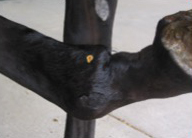Equine Veterinary Journal Early View May 2015
By Heather Ferguson
Diffusion of mepivacaine to adjacent synovial structures after intrasynovial analgesia of the digital flexor tendon sheath
Jordana, A. Martens, L. Duchateau, M. Haspeslagh, K. Vanderperren, M. Oosterlink and F. Pille
This study set out to evaluate the extent of diffusion of mepivicaine to adjacent synovial structures following intrasynovial injection into the digital flexor tendon sheath.
Eight horses with no clinical or radiographic orthopaedic abnormalities were included in the study. Under general anaesthesia in lateral recumbency, each horse had synoviocentesis of the digital flexor tendon sheath performed on the uppermost forelimb and hindlimb. At the same time venous blood samples were obtained. A standard dose of mepivicaine (1ml/50kg) was injected into the same limbs from which synovial fluid had been sampled.
Samples of synovial fluid were then aspirated from the treated tendon sheaths as well as the metacarpophalangeal/metarsophalangeal joint, proximal interphalangeal joint, distal interphalangeal joint and navicular bursa in the injected limbs and the contralateral metacarpophalangeal/metatarsophalangeal joint 15 minutes (forelimb) and 60 minutes (hindlimb) post-injection with blood samples at the same timepoints. The protocol was repeated two weeks later exception that the forelimb sites were sampled at 60 minutes and the hindlimb sites at 15 minutes.
All tendon sheath injections resulted in mepivicaine concentrations within synovial fluid well above those required for analgesia. Very low mepivicaine concentrations were found in all adjacent synovial structures sampled, and even the highest of these was well below a clinically relevant level.
The concentrations in adjacent structures were all higher at 60 minutes post-injection than at 15 minutes, with the exception of the navicular bursa. There were no statistically significant differences between the concentrations in each adjacent synovial structure. Concentrations in blood were also below clinically significant concentrations at both time points.
As the study was carried out in sound horses, further studies are required to test whether similar observations are made in horses with DFTS pathology and effusion and using different doses of mepivicaine.
Bottom line:
Injection of the digital flexor tendon sheath with mepivicaine at the standard dose results in sufficient concentration for analgesia only in the digital flexor tendon sheath. Diffusion to adjacent synovial structures did not result in clinically relevant concentrations.
--Ends--


